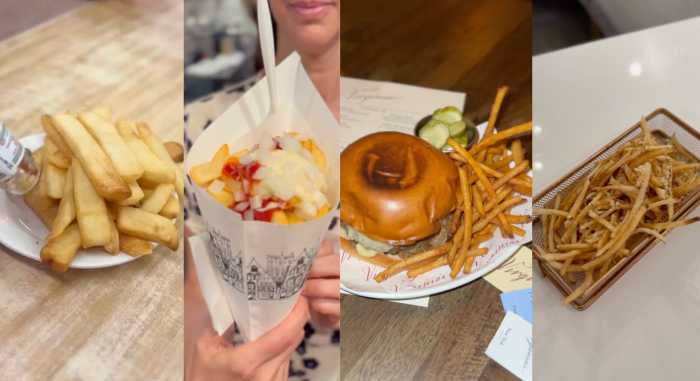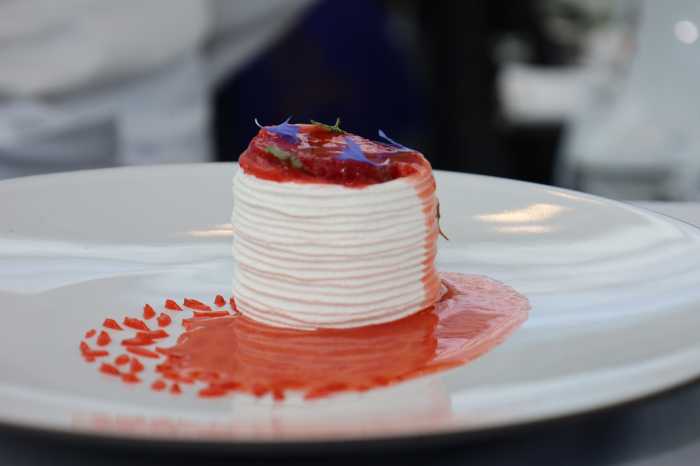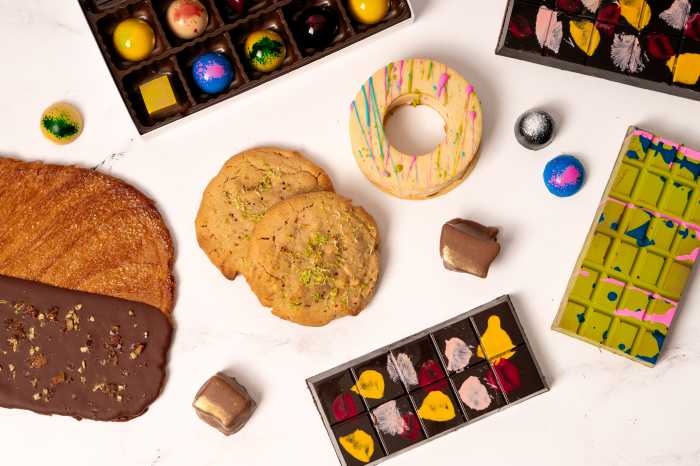
If you’re looking for a frozen treat on a sweltering day in New York City, there’s no shortage of options hailing from all over the globe: you can have your pick of ice cream in scoop or soft serve form, frozen custard, rolled Thai ice cream, Italian gelato, Taiwanese shaved ice, Indian kulfi.
Suffice it to say, Levantine booza isn’t the first to come to mind. But you can order a taste of ice cream’s creamier, denser and more elastic cousin in one traditional flavor at Cedars Pastry, a Lebanese bakery in Bay Ridge, and, as of Monday, in a whole range of flavors at a new shop in Williamsburg.
Republic of Booza is now scooping 17 flavors of the frozen, dairy-based dessert for the public on North 4th Street.
Co-founder Michael Sadler, 29, answered all of our questions about the icy treat he first tried while traveling abroad:

What is booza?
Booza is a form of ice cream developed about 500 years ago in an eastern pocket of the Mediterranean, encompassing modern-day Lebanon, southern Turkey, Syria and parts of Greece.
The two key regional ingredients that distinguish the milk-based frozen treat from Western homologues are sahlab, or ground orchid root, and mastic, a resin exuded from the bark of a tree that grows exclusively on the Greek island of Chios.
Mastic, also known as Arabic gum, and a unique production process join forces to give booza “a creamy, elastic texture that makes it smoother and denser than more familiar forms of ice cream,” Salder says. “Sometimes I say that booza is like gelato on steroids, because you take a spoon through it and you will not see any pockets of air whatsoever, which means it packs more flavor per scoop than any kind of ice cream I’ve ever tried.”
It also melts at a slower rate and holds its shape for longer (which means it won’t drip all over your clothes on a warm day).

How is it made?
The process begins by pouring a liquid ice cream base with sahlab and mastic into a freezer drum. (Back in the day, these were cooled in iced salt water baths, but now freezer coils do the trick.) The drum serves as a mortar for a three-foot long wooden pestle, which is used to pound the mixture as it starts to solidify. The confectioner alternates between crushing the booza with his pestle and stretching it with his hands.
”We’ll be doing that in-store, a couple hours a day during busy times, live in front of our customers. It’s a pretty fun, theatric, energetic process,” Sadler says.
What flavors does it come in?
Historically, booza is served in one flavor, qashta, or candied cream.

That’s where Sadler and his partners — Tamer Rabbani, Jilbert El-Zmetr and Mohammed Makki — saw room to expand the dessert’s parameters: “Nobody else is really making it in a full spectrum of flavors. We’re using booza as a vehicle to explore flavors from all over the world: iconic American staples, global inspirations and our own experimental creations,” says the Cleveland-born Sadler, whose co-founders are Canadian, Australian and Qatari, respectively. (Hence their shop’s democratic name: “We thought the Republic would be its own little collective of discovery,” united by a love of booza.)
Alongside strawberry and rocky road, you’ll find red miso, horchata de chufa (based on a Spanish beverage made from the tubers of the nutsedge plant), lucuma (a Peruvian fruit), Sichuan white chocolate and mint tahini chip.
Republic of Booza’s freezer case also expands beyond the sweet spectrum into the savory, with options like Bloody Mary and gochujang (Korean chili) sorbets.
Not all flavors appeal to all palates, Sadler and his partners have found: “The cantaloupe-feta sorbet is very divisive. It’s some people’s absolute favorite flavor; for other people, it’s the only one they wouldn’t have again.”
How much will it cost me?

At Republic of Booza, the dessert comes in four sizes, the smallest of which may strike New Yorkers as miniature.
“Our cups have been confused as mini-cups, but by weight, it is no smaller than anything else you’d serve,” Sadler explains. “Even our small … is a full quarter-pound of ice cream.”
Small ($5.25), medium ($6.25) and large ($7.25) servings come in cups or sugar or wafer cones; extra-large helpings ($8.25) are sold in cups or colorful Konery artisanal waffle cones.
Republic of Booza is located at 76 N. 4th St., a modern-looking storefront with a mostly muted color palette and seating for about 15. A few pops of bright color embellish the space, as well as historical accents like freezer drums and pestles and a large wall mural explaining the origins of ice cream and booza. Servers will channel the old-school ice cream parlor vibe with aprons, soda jerk hats, long-sleeved white shirts and vibrant bowties.





































